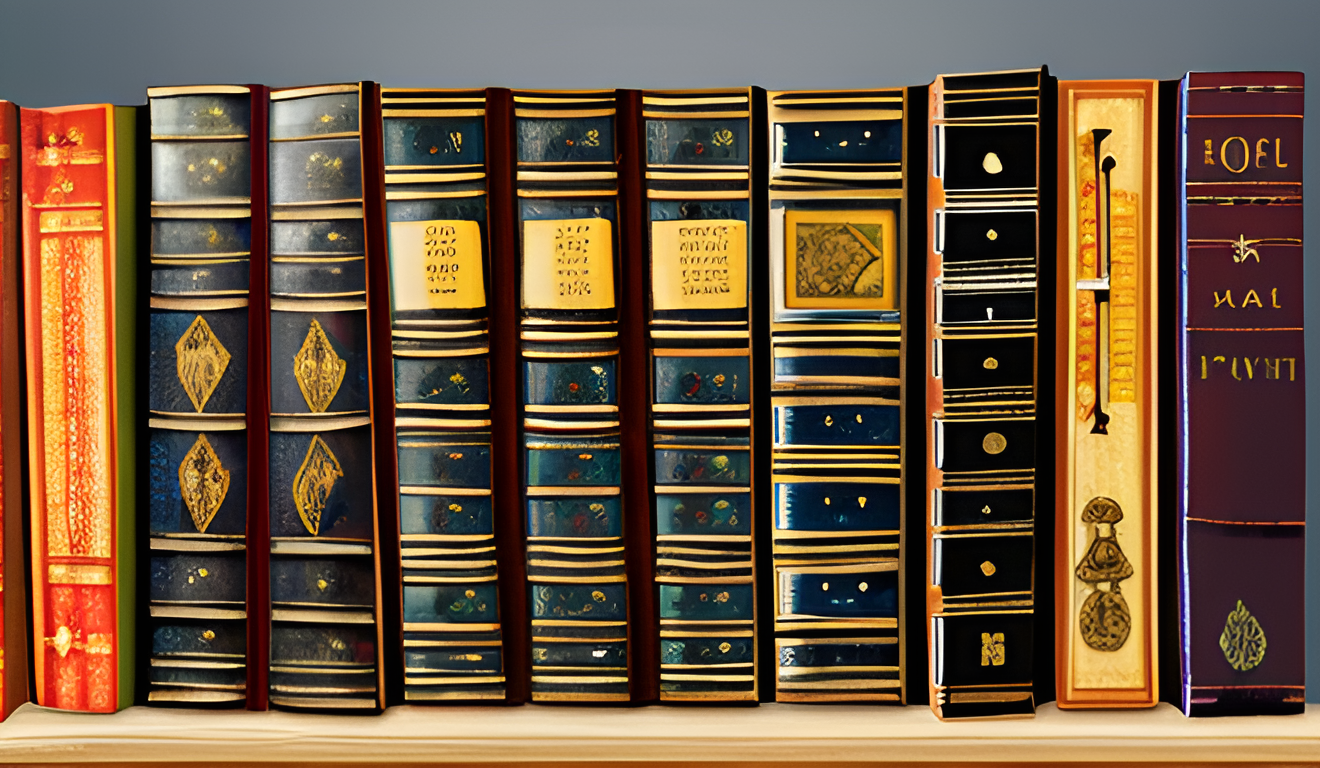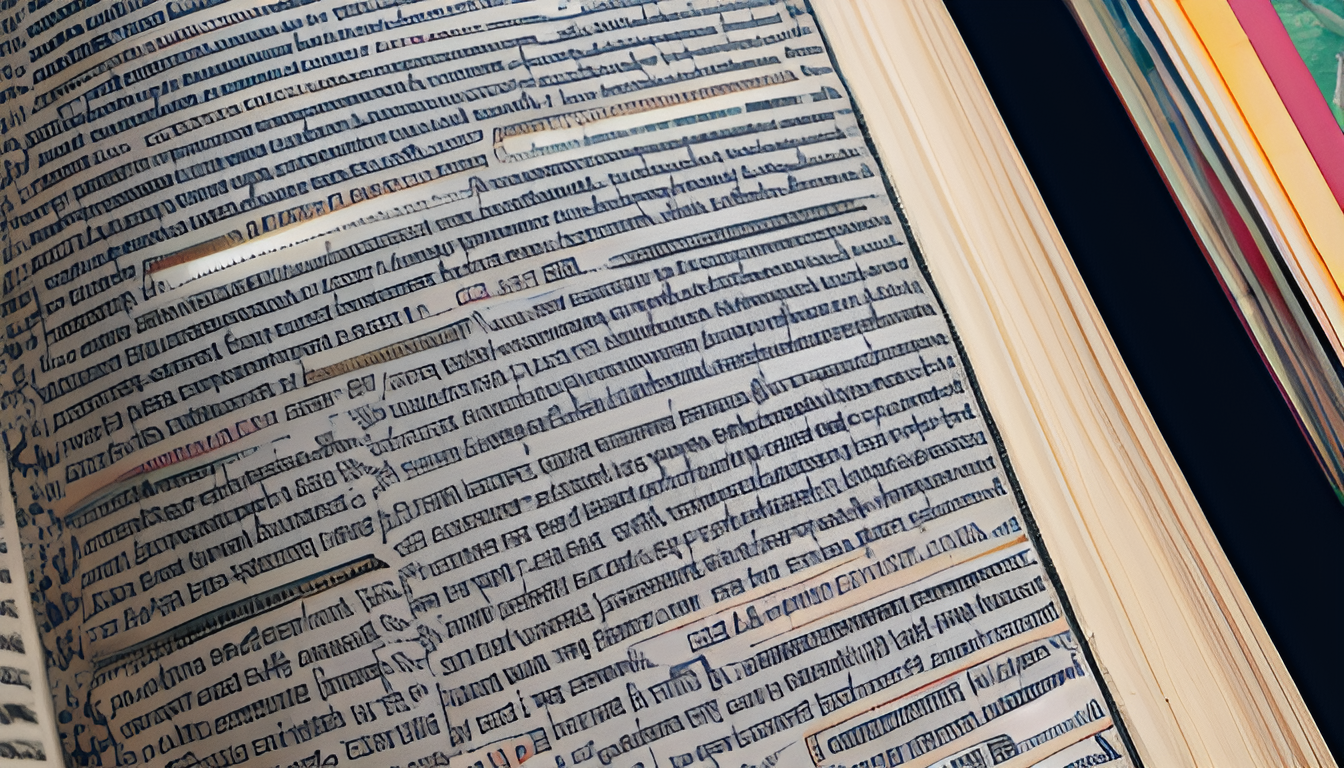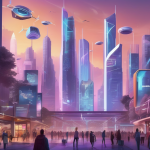How AI Is Reshaping the Way We Preserve Literary History

In the digital age, the preservation of our literary heritage is undergoing a profound transformation, thanks to artificial intelligence. Imagine a world where the words of Shakespeare or the tales of Homer are not only saved but also brought back to life in ways we never thought possible. This is the exciting reality we are stepping into, where AI technologies are reshaping how we archive, digitize, and engage with literature from the past.
AI is not just a tool; it’s a revolutionary force in the field of literary preservation. From advanced algorithms that analyze text to systems that enhance accessibility for all, the implications are vast. For instance, have you ever wondered how many classic texts are gathering dust in libraries, waiting to be rediscovered? With AI’s help, these literary gems can be digitized and made accessible, ensuring that future generations can appreciate their beauty and significance.
Moreover, AI is enhancing our understanding of literature through machine learning. By analyzing patterns in texts, AI can reveal insights about historical contexts and authorial intent that we might miss. It’s like having a literary detective on our side, uncovering hidden meanings and connections that enrich our reading experience. As we dive deeper into this technological revolution, the future of literary preservation looks not just promising, but exciting.
In conclusion, as AI continues to evolve, it holds the potential to redefine our relationship with literature. We are on the brink of a new era where the past is not only preserved but also made vibrant and engaging for everyone. The question remains: are we ready to embrace this change?
The Role of AI in Archiving Literature
Artificial Intelligence is not just a buzzword; it’s a game-changer in the world of literary archiving. Imagine a library where every book is perfectly cataloged, every page preserved, and every word easily accessible. Sounds like a dream, right? Well, with AI, that dream is becoming a reality. The integration of AI technologies into the archiving process is streamlining how we preserve literary works, ensuring that even the most fragile texts remain intact for future generations.
One of the most significant advancements is the use of automated cataloging systems. These systems can analyze vast collections of literature, identifying key themes, authors, and historical contexts at lightning speed. This means that researchers and enthusiasts can find what they’re looking for without sifting through mountains of data. Think of it as having a personal librarian who knows exactly where every book is located and can recommend related works based on your interests.
Moreover, AI enhances the preservation of texts through sophisticated data management techniques. By employing machine learning algorithms, institutions can predict which texts are at risk of deterioration and prioritize their preservation efforts. This proactive approach not only saves time but also ensures that critical literary works are safeguarded against the ravages of time.
In addition to these advancements, AI also facilitates collaborative archiving efforts across the globe. With tools that allow for real-time sharing and updates, literary institutions can work together to create a more comprehensive and accessible archive. This collaborative spirit is crucial, as it ensures that diverse voices and narratives are preserved and celebrated.
Digitization of Historical Texts
The advent of artificial intelligence has transformed the landscape of historical text digitization. Gone are the days when preserving literary gems meant labor-intensive manual processes. Today, advanced scanning and recognition technologies powered by AI are paving the way for a more efficient and effective approach to keeping our literary heritage alive. Imagine walking into a library where every book, regardless of its age, is just a click away. That’s the magic of AI!
Through the use of sophisticated algorithms, AI can rapidly convert printed texts into digital formats, ensuring that these works are not only preserved but also made accessible to a global audience. The benefits of this technology are profound:
- Widespread Accessibility: Digitized texts can be accessed from anywhere in the world, breaking geographical barriers.
- Protection Against Deterioration: Digital copies safeguard against the wear and tear of physical texts, which can succumb to time.
- Enhanced Research Opportunities: Scholars can analyze large datasets of literary works, uncovering trends and insights previously hidden in the pages of history.
Moreover, AI-driven Optical Character Recognition (OCR) technologies are improving the accuracy of text recognition, allowing us to capture even the most intricate details of original manuscripts. This means that not only are we saving the words, but we’re also preserving the essence of the authors’ intentions and the cultural contexts in which these works were created.
As we embrace these innovations, we are not just digitizing texts; we are revitalizing our connection to the past, ensuring that future generations can engage with literature in ways we are just beginning to imagine.
Machine Learning for Text Analysis
In the realm of literary preservation, machine learning is emerging as a game-changer, transforming how we analyze and interpret texts. Imagine sifting through thousands of literary works in seconds—this is the power of AI! With machine learning algorithms, researchers can uncover hidden patterns, trends, and insights that would otherwise remain buried in the pages of history.
By leveraging vast datasets, these algorithms can identify themes, styles, and even the emotional undertones of various literary pieces. This process not only enhances our understanding of historical texts but also allows us to draw connections between different works and authors. For instance, consider how machine learning can analyze the sentiment of a poem and compare it with novels from the same era, revealing the societal influences that shaped both forms of literature.
Moreover, the application of natural language processing (NLP) techniques enables AI to understand context, tone, and even the nuances of language. This capability can lead to groundbreaking discoveries about an author’s intent or the cultural backdrop of a literary piece.
As we embrace these advanced technologies, the future of literary analysis looks promising. The integration of machine learning not only democratizes access to literary insights but also enriches our appreciation of the written word. With each algorithmic breakthrough, we are stepping closer to a comprehensive understanding of our literary heritage, making it more relevant and engaging for future generations.
Sentiment Analysis in Literature
Imagine diving into a novel and feeling the waves of emotion wash over you. Sentiment analysis, powered by artificial intelligence, takes this experience to a whole new level. It’s like having a literary detective at your side, unraveling the complex emotional threads woven into the text. By employing sophisticated algorithms, AI can dissect a piece of literature, identifying the underlying sentiments that authors embed in their work.
This innovative approach allows us to gain a deeper understanding of the emotional landscape of literary pieces. For instance, AI can analyze the language used by an author to uncover sentiments ranging from joy to despair. This is not just about identifying positive or negative feelings; it’s about grasping the nuances that shape a character’s journey or the societal context of the narrative. The insights garnered from sentiment analysis can spark discussions and interpretations that might never have surfaced otherwise.
Consider how sentiment analysis can be applied across various genres:
- Classic Literature: Understanding the emotional depth of characters in works like Pride and Prejudice can reveal societal norms and personal struggles.
- Modern Novels: Analyzing contemporary texts helps us see how current events influence emotional expression.
- Poetry: The condensed nature of poetry makes sentiment analysis particularly powerful, uncovering layers of meaning in just a few lines.
As we embrace these AI-driven tools, we not only enhance our appreciation of literature but also open doors to new interpretations that keep the literary conversation alive and thriving. The future of literary analysis is bright, and sentiment analysis is at the forefront of this exciting journey.
Character Recognition Technologies
In the realm of literary preservation, are emerging as a game-changer. These advanced systems, particularly Optical Character Recognition (OCR), leverage the power of artificial intelligence to convert different types of documents—be it printed texts or handwritten manuscripts—into machine-readable content. Imagine a world where the fragile pages of ancient texts are transformed into digital formats, making them accessible to anyone with an internet connection! This transformation not only preserves the original works but also ensures that they are safeguarded against the ravages of time and physical deterioration.
The accuracy of these technologies has significantly improved due to the integration of machine learning algorithms. These algorithms are trained on vast datasets, allowing them to recognize fonts, styles, and even the nuances of different handwriting. For instance, a well-trained OCR system can differentiate between similar-looking characters, ensuring that the text remains true to its original form. This level of precision is crucial when dealing with literary works that hold cultural and historical significance.
Moreover, the benefits of character recognition extend beyond mere digitization. They facilitate searchability, enabling researchers and enthusiasts to delve into texts with ease. Imagine being able to search for specific phrases or themes across thousands of literary works in seconds! This capability not only enhances research but also enriches the reading experience, making literature more engaging and accessible.
In summary, character recognition technologies are not just about preserving the past; they are about creating a bridge to the future. As we continue to embrace these innovations, we open up a treasure trove of literary heritage, inviting new generations to explore and appreciate the richness of our shared history.
Preservation of Oral Traditions
In a world where the written word often takes center stage, the is a vital yet sometimes overlooked aspect of literary history. With the advent of artificial intelligence, we now have the tools to capture and archive these rich, spoken narratives that have been passed down through generations. Imagine a tapestry woven from countless voices, each thread representing a unique story, culture, or lesson. AI is stepping in to ensure that these threads are not lost to time.
AI technologies, such as voice recognition and recording software, are revolutionizing how we document oral literature. By accurately capturing spoken performances, AI allows us to create a digital archive that is both accessible and enduring. This is particularly significant for cultures where oral storytelling is a primary means of communication. The ability to record these performances not only preserves the content but also maintains the emotional nuances and cultural contexts that are often lost in written translations.
Furthermore, AI can analyze these recordings, identifying patterns in storytelling techniques, themes, and even regional dialects. This analysis offers valuable insights into the evolution of language and the cultural significance of oral traditions. By employing machine learning algorithms, researchers can uncover connections between different narratives, enhancing our understanding of how stories shape identities across cultures.
As we look to the future, the role of AI in preserving oral traditions is poised to expand even further. By creating interactive platforms that allow users to engage with these stories, we can ensure that the voices of the past resonate with future generations. The preservation of oral traditions is not just about saving words; it’s about keeping the spirit of storytelling alive.
Enhancing Accessibility Through AI
In today’s world, accessibility is more crucial than ever, and artificial intelligence is stepping up to the plate in remarkable ways. Imagine a library where every book is not only available to read but also comes with features tailored to individual needs. How cool is that? AI is making this a reality by introducing tools that help people with disabilities engage with literature like never before.
One of the standout features AI offers is text-to-speech technology. This allows users to listen to literary works instead of reading them, which can be a game-changer for those with visual impairments. It’s like having a personal narrator bringing stories to life, making the experience more immersive. Additionally, AI can analyze the text to provide summaries and insights, helping readers grasp complex narratives quickly.
Another significant advancement is automatic translation. AI-driven translation tools can break down language barriers, making literary works accessible to a global audience. Imagine reading a classic Russian novel in your native language without losing the essence of the original text! This not only broadens the audience but also enriches the cultural exchange between different literary traditions.
Furthermore, AI is creating interactive experiences that allow readers to engage with literature in a personalized manner. For instance, platforms powered by AI can recommend books based on a reader’s preferences, making it easier to discover new favorites. This level of customization ensures that everyone, regardless of their background or abilities, can enjoy the beauty of literature.
In conclusion, AI is not just enhancing accessibility; it’s revolutionizing the way we interact with literary works. By breaking down barriers and creating inclusive experiences, AI is ensuring that literature remains a vital part of our shared cultural heritage.
AI in Language Translation
Artificial intelligence is revolutionizing the way we approach language translation, breaking down barriers that once seemed insurmountable. Imagine being able to read a novel written in a different language, feeling the emotions and nuances just as the author intended. AI makes this possible through sophisticated algorithms that analyze context, idioms, and cultural references. This isn’t just about translating words; it’s about capturing the essence of a text.
One of the most significant advancements in AI translation is the use of neural networks. These networks mimic the way humans learn languages, allowing for more natural and fluid translations. Unlike traditional methods, which often produced clunky and awkward results, neural networks can understand the subtleties of language, providing translations that resonate with readers. For instance, a metaphor in one language can be translated into a similar metaphor in another, preserving the original’s impact.
Moreover, AI-driven translation tools are not just for literary works. They are also enhancing accessibility for individuals who speak different languages. Consider this: with AI, a person can easily access a wealth of literature from cultures around the world. This opens doors to a diverse range of voices and stories that enrich our understanding of humanity.
As we look to the future, the potential for AI in language translation is vast. With continuous improvements in machine learning and natural language processing, we can expect even more accurate and culturally aware translations. The world of literature is becoming more interconnected, allowing readers to explore the richness of global narratives like never before.
Creating Interactive Literary Experiences
Imagine diving into a book where the characters leap off the pages, inviting you to join their adventures. Artificial intelligence is making this dream a reality by creating interactive literary experiences that engage readers like never before. These innovative platforms allow users to explore stories in a dynamic way, transforming the traditional reading experience into something immersive and personal.
AI technologies are enabling features that adapt to individual readers’ preferences. For instance, readers can choose different paths in a narrative, leading to multiple endings based on their choices. This choose-your-own-adventure style not only enhances engagement but also encourages readers to revisit texts, discovering new layers each time. Additionally, AI can analyze a reader’s interests and suggest relevant literary works, making recommendations that feel tailored just for them.
Moreover, interactive experiences often include multimedia elements, such as audio, video, and animations, which bring stories to life. For example, imagine listening to a character’s thoughts through an audio clip or watching a scene unfold in a short video. This multi-sensory approach caters to different learning styles and enhances comprehension, especially for younger audiences or those new to literature.
Incorporating social features into these platforms also allows readers to share their experiences, discuss interpretations, and even collaborate on creative projects. This fosters a sense of community, turning solitary reading into a shared journey. As we continue to embrace AI in literature, the possibilities for creating interactive and engaging experiences are boundless, ensuring that the magic of storytelling remains alive and well.

The Future of Literary Preservation
As we gaze into the horizon of literary preservation, the role of artificial intelligence becomes increasingly pivotal. Imagine a world where every book, poem, and oral tradition is not just preserved but also brought to life through technology. The future is bright, and AI is at the helm, steering us toward innovative solutions that promise to reshape our engagement with literature.
One of the most exciting prospects is the integration of AI with augmented reality (AR). Picture this: you walk into a library, and instead of merely reading a book, you can experience its context through immersive storytelling. With AR, readers could virtually step into the world of their favorite authors, exploring the settings and characters as if they were part of the narrative. This technology doesn’t just preserve literature; it makes it an experience.
Furthermore, the use of blockchain technology for preserving literary works is gaining traction. By creating a secure, decentralized ledger, authors can protect their intellectual property while ensuring that their works remain accessible. This not only honors the original creators but also democratizes access to literature, allowing readers from all walks of life to enjoy timeless classics and contemporary masterpieces.
In addition, AI’s ability to analyze vast amounts of data will lead to new discoveries in literary studies. Imagine uncovering hidden connections between authors and their works or even discovering lost texts through predictive algorithms. The possibilities are endless and thrilling!
In conclusion, the future of literary preservation is not just about maintaining the past; it’s about creating a dynamic relationship between readers and literature. With AI as our ally, we can look forward to a future where literary heritage is not only preserved but also celebrated in ways we have yet to imagine.
Frequently Asked Questions
- How is AI used in preserving literary works?
AI is revolutionizing literary preservation by enhancing archiving processes, enabling efficient cataloging, and facilitating the digitization of historical texts. This ensures that important works are accessible for future generations.
- What role does machine learning play in literary analysis?
Machine learning algorithms analyze vast amounts of literary data, uncovering patterns and insights that deepen our understanding of historical texts. This technology helps researchers interpret literature in innovative ways.
- How does AI improve accessibility for readers?
AI tools enhance accessibility by providing features such as text-to-speech and automatic translations. This ensures that diverse audiences, including those with disabilities, can engage with literary works.
- Can AI help preserve oral literary traditions?
Absolutely! AI utilizes voice recognition and recording technologies to document and archive oral performances, ensuring that these rich traditions are preserved for future generations.
- What is the future of AI in literary preservation?
The future is bright! As AI technology evolves, it promises innovative solutions that will redefine how we engage with and understand our literary heritage, making literature more accessible and interactive.













